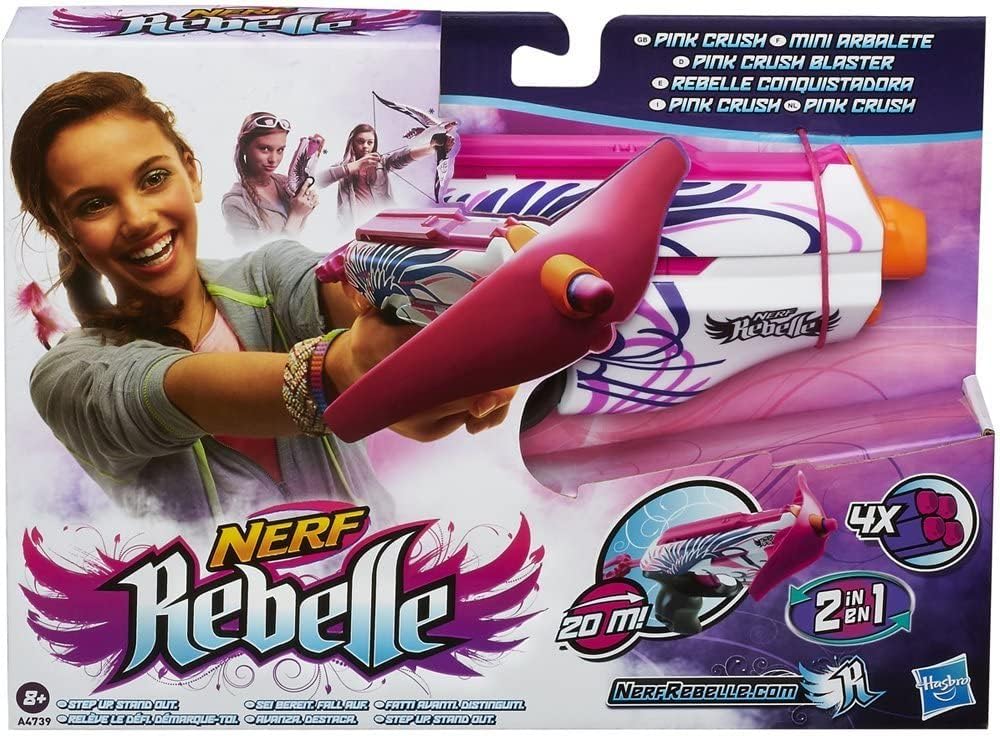
Nerf as a brand has created many different lines of products that each serve a niche or different function (Nerf Fandom, n.d.). Moreso, the collection that our particular toy is a part of is Elite 2.0, a remake and continuation of the previous N-Strike Elite line of products. The notable changes to this line of products are more room for storing darts on the gun itself but also allowing for attachments to be added to the gun.
Nerf has created an enormous amount of collections over the past few decades. Many of them being discontinued or out of production (Nerf Fandom, n.d.). Notably, the core functionality of the toys always remains the same even with the large amount of collections. For example, this toy gun is from the Elite 2.0 line which aims to replicate a more tactical feel and aesthetic. But many others exist such as Zombie Strike, which are almost functionally identical to the toys in the Elite line but with a more post-apocalyptic style.

The Nerf Rebelle also showcases an interesting dynamic. This line of toys, like most Nerf lines, are functionally identical with only a few differences. This also true for the Rebelles line, as this line was created specifically to be targeted at women. Nerf, being a brand making toy guns, has always been a gendered toy that was clearly marketed towards boys first. We can see this in the heavy use of young men in advertisements, the emphasis on combat (Cherney, 2018). Rebelles blasters feature much more traditionally effeminate colours like pink, purple and white. Additionally, the theming surrounding them in packaging and advertising portray the toys as designed for girls, and create the assumption that this line of toys is for girls whereas every other Nerf guns are for boys (Cherney, 2018).
The rate at which these collections release combined with their similarities between them showcases a problem within our capitalistic society. We can see a clear use of cross-selling and up-selling (Blattberg, Kim, & Neslin, 2008). While the toys remain nearly identical in feature, the brand makes an effort to create new and exciting collections that serve a theme to distinguish them. They also encourage customers to buy more toys for group play, attachments to upgrade toys, goggles, ammunition and more. This creates a cross-selling and up-selling cycle that pushes consumers to buy more and more. Nevertheless, there are still different features present throughout the different Nerf series. The Rivals series for example utilises balls instead of darts as munition, but that is it (Nerf Fandom., n.d.). Many of the blasters simply recreate already existing Nerf guns with the ammo being the only difference. DinoSquad works identically to traditional Nerf guns and only changes the eathetic the toys by theming them with various dinosaur shaped guns (Nerf Fandom, n.d.).
The different Nerf series all tend to bring in slight changes and/or new elements to their already existing guns. For example, a regular blaster like ours can be sold three separate times if each of them feature slight differences. Ours which features room for tactical attachments, a Rivals version that changes the ammo type, the DinoSquad version that changes the aesthetics. Functionally, these three toys are very similar but Nerf actively creates many new series to be able to sell a similar product many times, effectively up-selling their products.